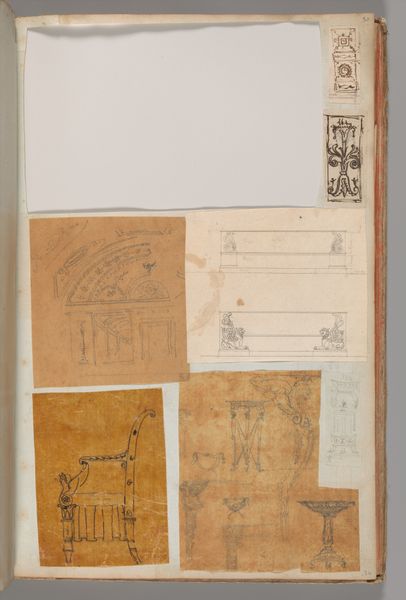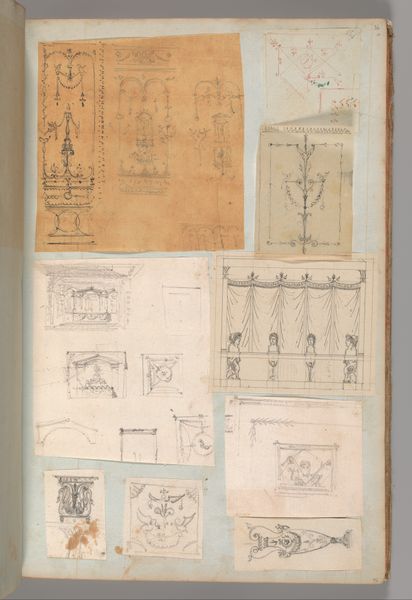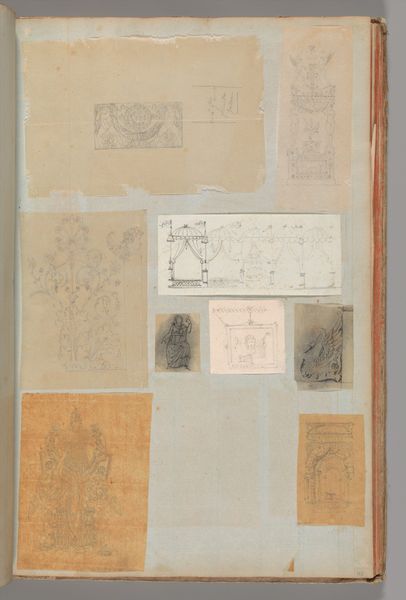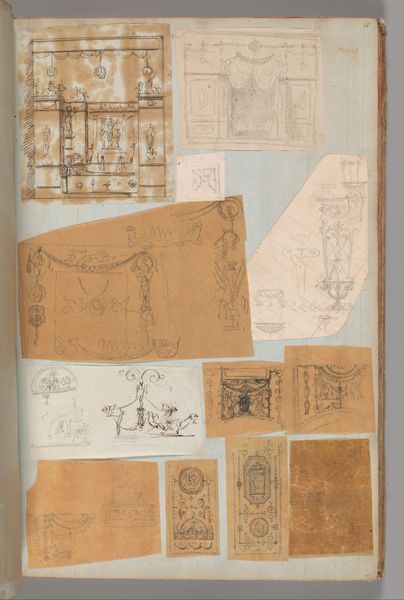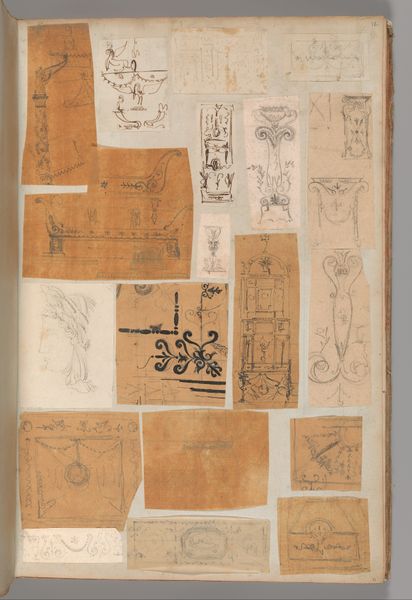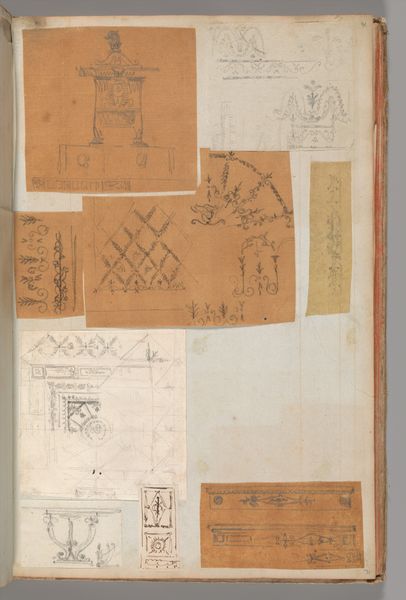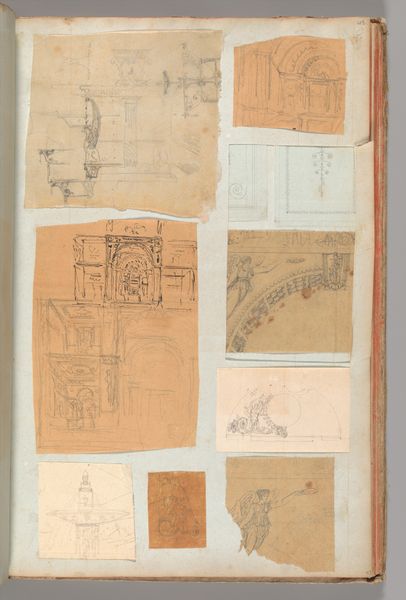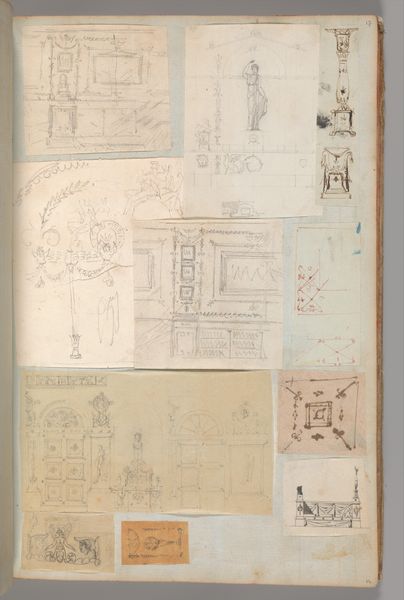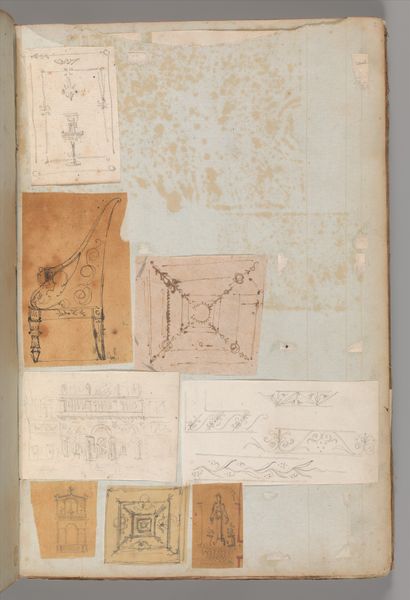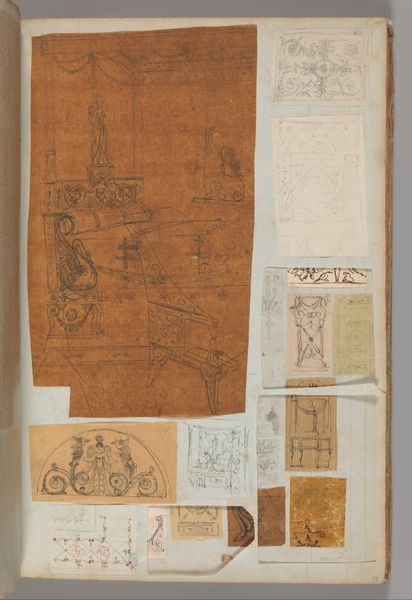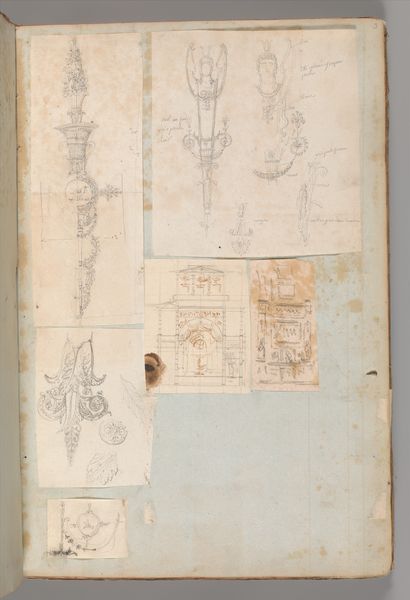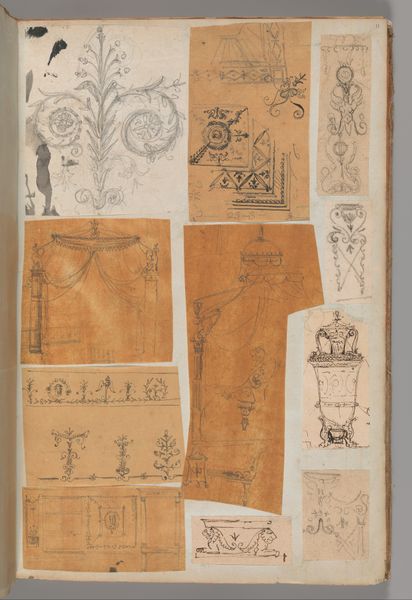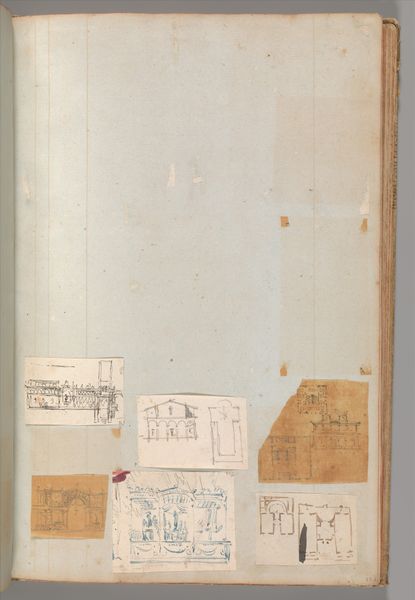
Page from a Scrapbook containing Drawings and Several Prints of Architecture, Interiors, Furniture and Other Objects 1795 - 1805
0:00
0:00
drawing, print, paper, pencil, architecture
#
drawing
#
neoclacissism
# print
#
paper
#
pencil
#
architecture
Dimensions: 15 11/16 x 10 in. (39.8 x 25.4 cm)
Copyright: Public Domain
Curator: What a delicious peek into a bygone era. Look at this page from a scrapbook, assembled between 1795 and 1805, containing drawings and prints of architecture, interiors, furniture and other objects, conceived by Charles Percier. It’s so evocative—feels like finding a whisper from the past. Editor: It’s chaotic, but organized chaos, right? It’s all sketches, mostly in pencil it looks like, plus some prints pasted on paper. All architectural details, bits of furniture. A fragmented world of design in production. Curator: Exactly. Percier has this eye, hasn't he? He doesn't just record; he composes these scrapbook pages. The varying scales of each rendering contribute a strange dreamy logic of their own. It is as if he is dreaming aloud with neoclassical elements, mixing design solutions into his creative playground, Editor: This really reveals how the division of labor must have functioned at the time. Percier is conceptualizing, not building—dreaming up commodities for someone else's work. I wonder how much control he had over the finished product; I am looking at this little drawing of what could be the corner of a room or a cabinet. What’s more abstract, the drawing or its commodified form? Curator: Well, I imagine there was significant dialogue. These were luxurious, elaborate objects. I bet patrons had thoughts—very strong thoughts—of their own on what their furniture should convey! The collaborative aspect of this is delicious to consider—a push-and-pull towards a manifestation. It has its own peculiar tension and harmony. Editor: And all of these individual elements represent so much skilled work. The cutting of the paper, preparing the print blocks. Look at how even the simple lines imply so many hands were involved beyond the artist. And then the finished piece – that would enter the economy too as luxury good, bought and sold and, in theory, bringing social distinction. Curator: I like that—distinction embodied by functional art objects. I hadn’t thought about it in quite that way, it reminds me that even these rough sketches bear the whiff of their possible destinations, these elegant homes… or perhaps, as just records of designs never built, this becomes all that is left of grand ambition. What do you make of this collection, ultimately? Editor: It's an intimate glimpse into an early stage of design production, the germinating thoughts behind aristocratic aesthetics and how the logic of manufacture turns a page of rough sketches into the dreams that filled actual drawing rooms.
Comments
No comments
Be the first to comment and join the conversation on the ultimate creative platform.
